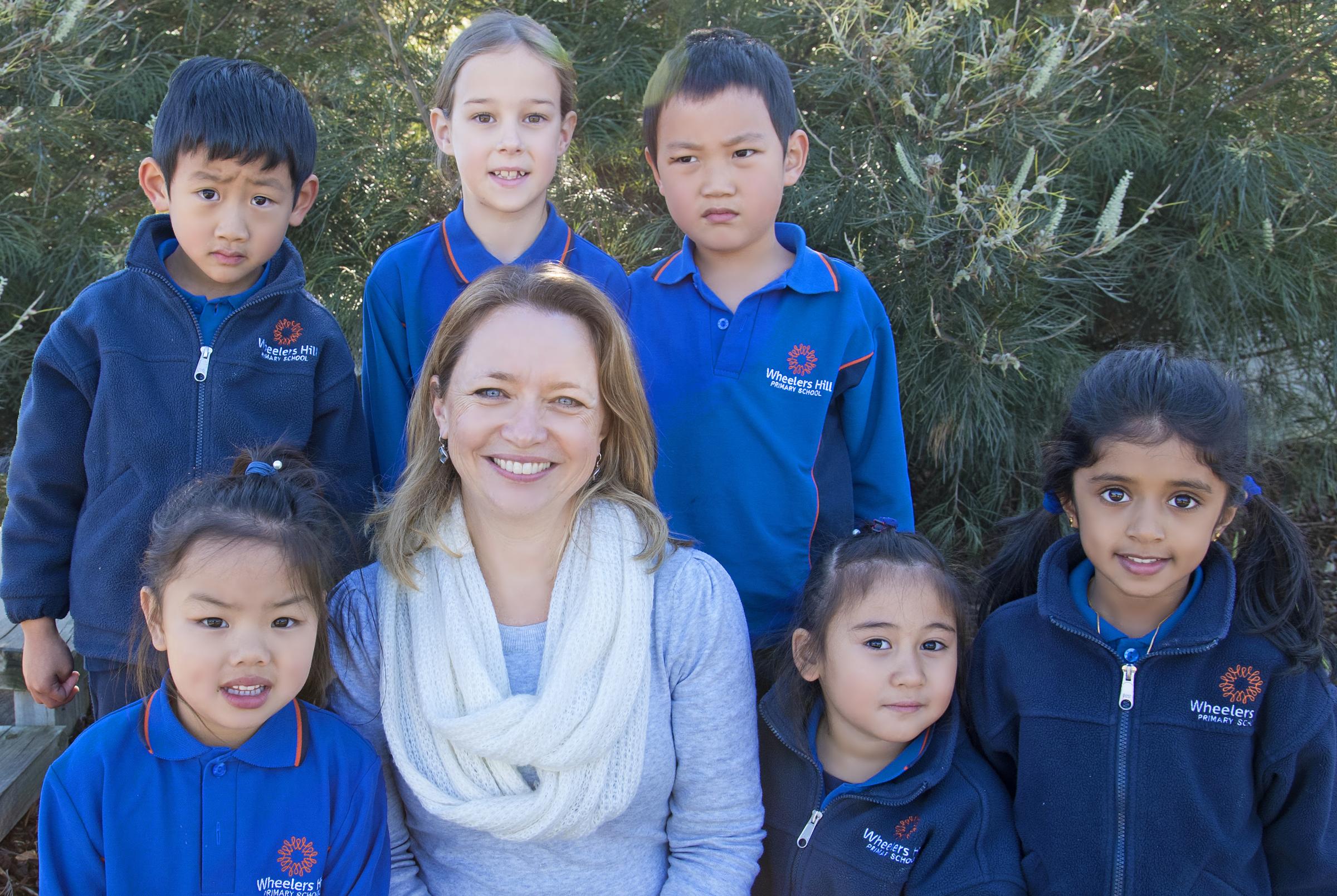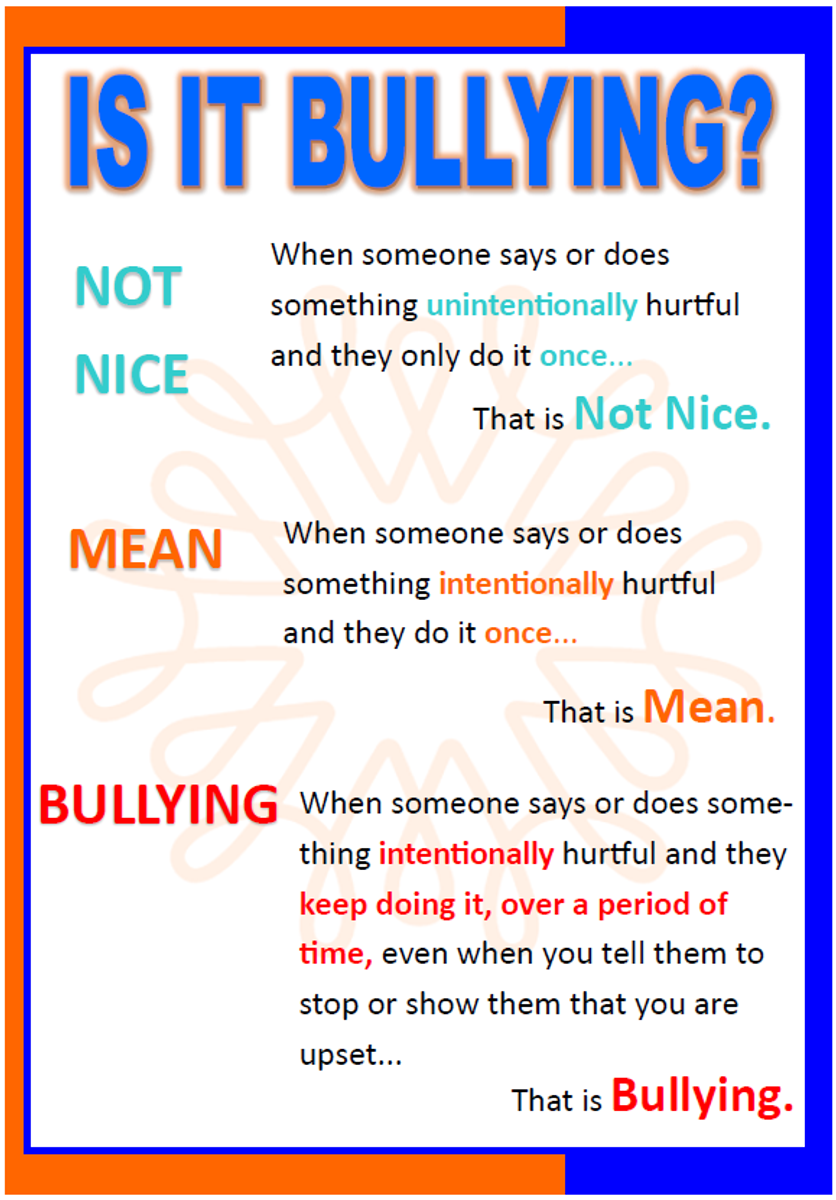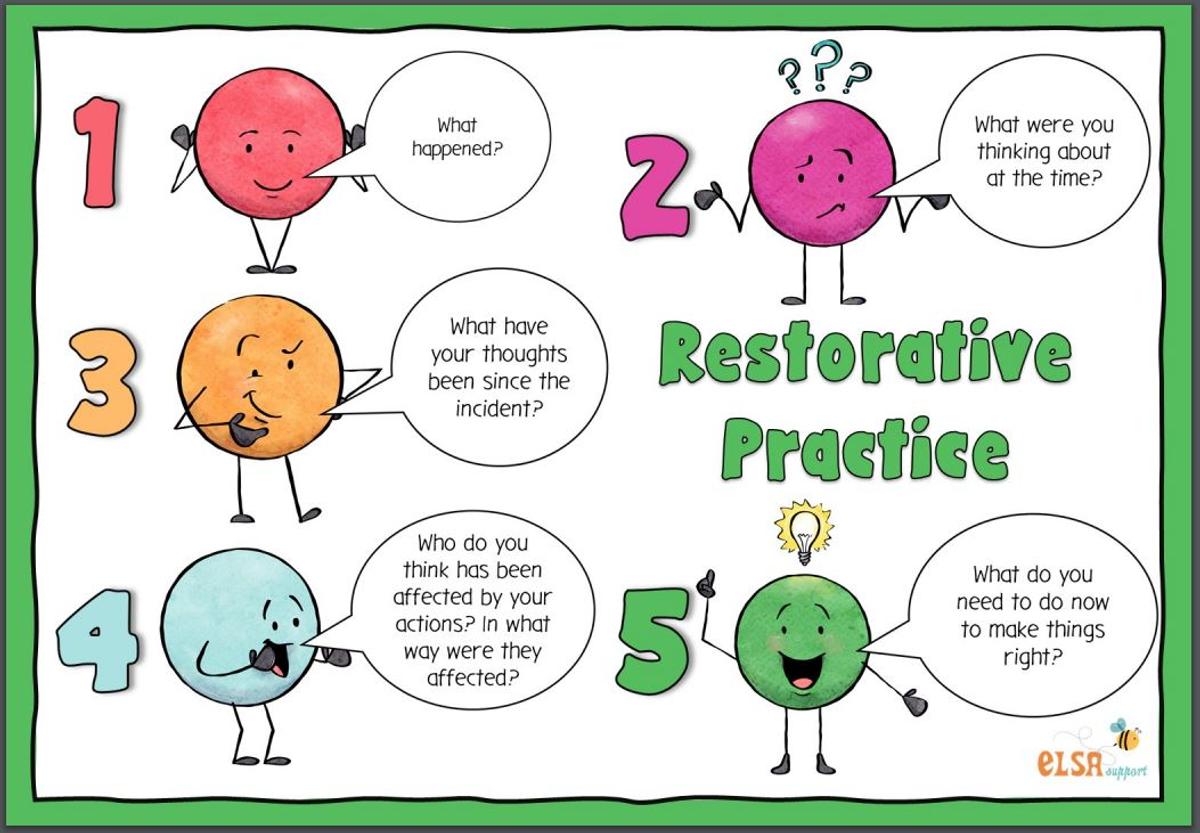Assistant Principal
Katrina Spicer - Wellbeing and Inclusion

Assistant Principal
Katrina Spicer - Wellbeing and Inclusion
Traffic Around the School
Thank you to those parents who follow the parking restrictions around the school. We have noticed a considerable improvement in the flow of traffic over the past few weeks, but we still notice some parents who impact the traffic flow by stopping or parking in no standing zones, or by leaving their car in the Kiss & Go zones. Monash Council have sent parking officers to the school several times already this year, so please make sure you read and follow the parking signs around the school to avoid receiving a fine.


Is It Bullying?
The word 'bully' is a powerful word that evokes images of harmful intent, power imbalance, fear and intimidation. This word is sometimes used by students and families when students have experienced unpleasant experiences at school.
The Merriam Webster dictionary definition of this word is: 'one who is habitually cruel, insulting, or threatening to others who are weaker, smaller, or in some way vulnerable.'
At WHPS we have clear and consistent messaging about what constitutes bullying. We teach our students that one unpleasant experience does not meet the definition of bullying, and that this behaviour could be described as 'Not Nice' or 'Mean'. Bullying is ongoing, targeted hurtful behaviour.


This poster is on display in every classroom and is used by teachers to assist with resolving playground and social issues. Having clear, consistent language around inappropriate behaviour helps our students to understand their own and other students' behaviour and assists school staff to manage such behaviours.
Restorative Practices
As our students develop their social skills, inevitably some students will make mistakes, behaving in ways that are hurtful or harmful to others. When mistakes like this occur at WHPS, we use a restorative approach to help heal the harm done and set things right.
A restorative approach differs from more punitive approaches to behaviour management, in that we focus on the harm done, and what must happen to set things right. Behaviour mistakes are managed in terms of how others have been affected and we aim to bring about a sense of remorse and restorative action on the part of the 'offender', and forgiveness by the 'victim'.
Research shows that a restorative approach to behavioural mistakes results in more lasting behavioural change than authoritarian measures, and improved relationships between those who harm, and those who have been harmed.
A typical restorative chat would involve all concerned parties. Everybody has the opportunity to explain their side of the story, and those affected are able to say how they would like the situation to be resolved. Usually, children simply ask for an apology and sometimes, if they are not feeling safe around someone, they might ask for the 'offender' to be withdrawn from the playground. 'Offenders' are induced to feel remorse and empathy for those affected, and we aim to mend broken relationships.
Staff members who run restorative chats will follow a set structure or script, to guide the discussion. The majority of behaviour mistakes at WHPS are managed through this restorative process.
A restorative approach may not be appropriate for significant, major incidents. In such cases, students will be referred immediately to school leadership.


Katrina Spicer
Assistant Principal for Wellbeing and Inclusion
katrina.spicer@education.vic.gov.au


Every interaction with your child is either building connection or creating distance. Most parents are unknowingly choosing distance without realising the long-term emotional consequences.
In the daily grind of managing the household, getting children to and from school (and other commitments), regulating their emotions and our emotions, and navigating the everyday realities of life: it wears us out. We’re flustered. Exhausted. And… let’s be honest; sometimes we are impatient.
We want to be great parents. We know that connection is key. But now it’s 5pm, and our children are done for the day. The energy is shifting. Tempers are fraying. They’re bickering. You’ve asked and asked, but their school bag is still in the doorway.
When our willpower is at its lowest, our children are likely to be most challenging. At this point, us trying to get things right is like trying to start a campfire with wet matches—frustrating, energy-draining, and seemingly impossible. It’s easy to fall into a cycle of correction and direction that misses the most important aspect of raising children: connection.
Compassion is the answer. I know… It feels like a sharp command, a clear consequence, and a stern face will get you where you want to go faster: maybe it will. But you’re playing a longer game.
What is Compassion?
Let’s get clear on definitions. Compassion comes from two Latin words. In our English translation we’ll say that:
Com means together, with others. (Think community, communicate, combat, common.)
Passion doesn’t mean what you think. It’s Tony Robbins saying, “Believe in yourself! You can do it!” The word literally means to suffer.
So compassion, at its core, means to suffer together.
In Real Life
Consider a typical scenario: Your child is upset because a friend has moved away over the Christmas break. The natural response might be to minimise their feelings by saying things like, “You’ll make new friends” or “Stop moping around.” There’s the classic Aussie response: “You’ll be right.” But these responses tell children that their emotions are inconvenient or invalid. It feels dismissive.
Instead, true compassion means sitting with their pain. It means saying things like:
– “It must be really hard to miss your friend.”– “Being apart from someone you care about is tough.”– “I can see how much this is affecting you.”
The Power of Validation
Validation doesn’t mean agreeing with everything or solving every problem. It means acknowledging the emotional experience. When children feel heard, they feel safe. When they feel safe, they’re more likely to communicate openly and work collaboratively with parents.
This approach transforms discipline from a power struggle into a collaborative process. Instead of creating resistance, compassion builds connection.
5 Practical Ways to Practice Compassionate Parenting
The Long-Term Impact
Compassionate parenting isn’t a quick fix. It’s a long-term investment in your child’s emotional development. Children raised with this approach are more likely to:
– Develop strong emotional intelligence– Build healthier relationships– Communicate more openly– Handle stress more effectively– Show empathy to others
Discipline will always be part of parenting. But when discipline is rooted in compassion, it becomes a tool for teaching and connection rather than a weapon of control.
Remember, you’re not just raising children. You’re nurturing future adults who will carry the emotional skills you’ve taught them into every relationship and challenge they’ll face.
Emotional Regulation - A Heart-Centred Approach to Supporting Your Child
Meltdowns, outbursts, and challenging behaviours can leave us feeling lost and unsure how to help. It’s tough when our kids are struggling with big emotions! What we sometimes forget is that these behaviours usually stem from overwhelming feelings that our children don’t yet have the tools to manage.
Emotional Regulation is Dr Justin Coulson’s powerful guide to helping children understand and regulate their emotional world. Once they develop competence with this critical life skill, emotionally intelligent children will feel more confident, perform better at school, have healthier relationships with others, and even be physically healthier.
This presentation will equip parents with a five-step “emotion coaching” process that brings together the very best in emotional intelligence research from Dr John Gottman, the Yale Centre for Emotional Intelligence, and others, to build children’s resilience, increase wellbeing for the whole family, and develop healthier humans.
WHPS families can access this webinar via the Happy Families School Subscription.
Our school subscription to Happy Families allows access to the Happy Families website to all members of our school community.
Families can access the Happy Families website at: https://schools.happyfamilies.com.au/login/whps
Password: happywhps